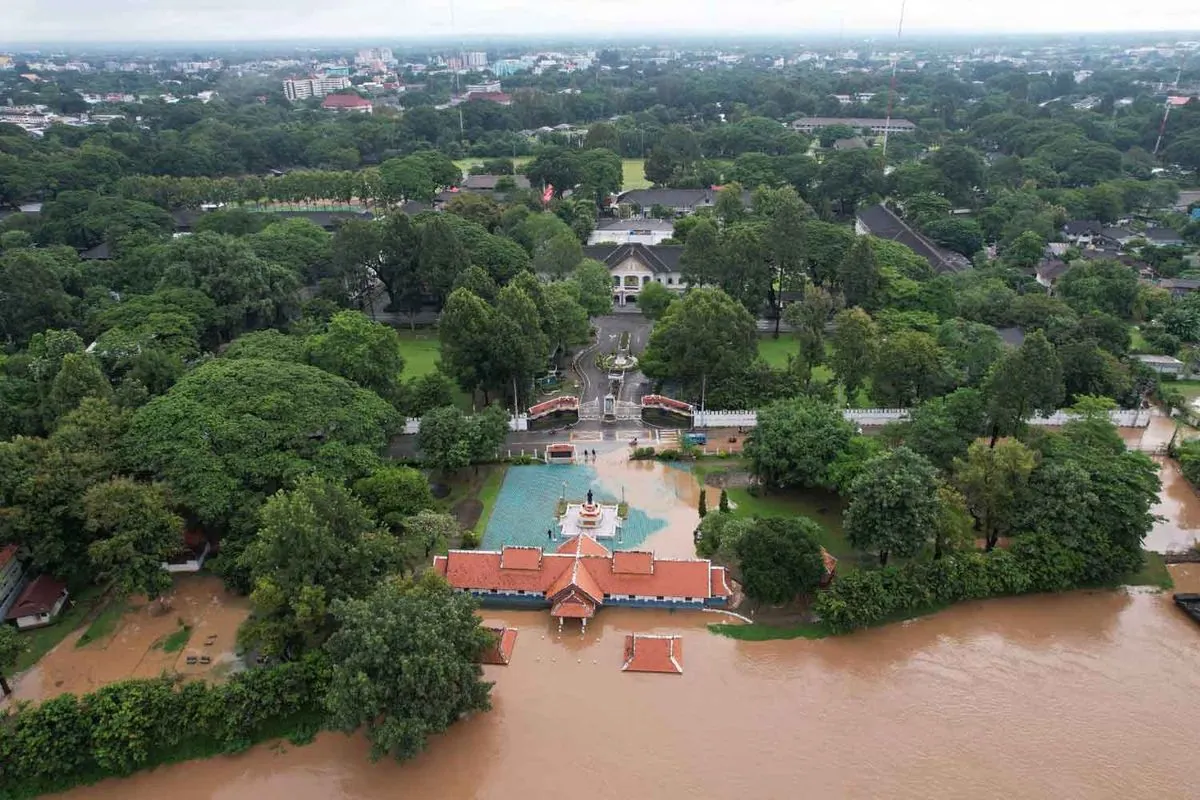Chiang Mai, Thailand's northern metropolis and a popular tourist destination, is currently experiencing significant flooding due to heavy seasonal rainfall. The Ping River, a major waterway in the Chao Phraya River system, has overflowed its banks, leading to widespread inundation across the city.
Local authorities have initiated evacuations and are actively working to mitigate the situation. Efforts include pumping water from residential areas and clearing obstructions in waterways and drainage systems to facilitate faster water recession. Numerous shelters have been established throughout the city to accommodate residents displaced by the flooding.
The Chiang Mai city administration reported that the Ping River's water level, which flows along the city's eastern edge, has reached critical levels and has been rising since the previous day. However, the provincial irrigation office has projected that the water level is likely to stabilize and return to normal within approximately five days.
One of the most pressing concerns has been the safety of animals in the area's numerous sanctuaries and parks. Rescue operations have been ongoing, with a particular focus on the Elephant Nature Park, a renowned elephant rescue and rehabilitation center. Approximately 125 elephants, along with other animals, have been relocated to safety, while some managed to escape independently, seeking higher ground.
This flooding event, the second in a span of six weeks, has surpassed expectations according to Nirat Pongsitthavorn, the Governor of Chiang Mai. The situation has led to the suspension of train services to the city, with the northern line from Bangkok now terminating at Lampang, about 90 minutes south of Chiang Mai. Despite the flooding, Chiang Mai International Airport, the fourth busiest in Thailand, reported normal operations.
The impact of the flooding extends beyond Chiang Mai, affecting 20 provinces across Thailand, primarily in the northern region. Since August, the Department of Disaster Prevention and Mitigation has reported 49 fatalities and 28 injuries due to flood-related incidents.
In response to the ongoing situation, the Thai government has announced plans to release water from the Chao Phraya Dam in Chai Nat province over the next week. This measure is necessary as the dam is at risk of exceeding its capacity. However, this action may potentially affect residents downstream, including those in Bangkok and surrounding areas in Thailand's central region.
Thailand's vulnerability to flooding is exacerbated by its tropical monsoon climate and the annual rainy season, which typically lasts from May to October. The country has been implementing various flood control measures since the severe floods of 2011, including the development of a comprehensive water management plan initiated in 2012.
As Chiang Mai grapples with this latest flooding event, it's worth noting the city's rich history and significance. Founded in 1296, it was once the capital of the Lanna Kingdom and is now home to over 300 temples, some dating back to the 13th century. The city's economy heavily relies on tourism, attracting millions of visitors annually.
Climate change is expected to increase the frequency and severity of flooding in Thailand, posing ongoing challenges for flood management and disaster preparedness. As the country continues to address these issues, the balance between flood control, water management, and the needs of various sectors, including agriculture and tourism, remains a critical concern for Thai authorities and residents alike.
